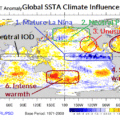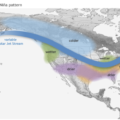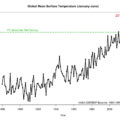THE Philippine Atmospheric, Geophysical and Astronomical Services Administration (Pagasa) said on Wednesday that there is an indication of the occurrence of La Niña following the onslaught of the El Niño phenomenon in the country.
Pagasa acting administrator Dr Vicente B. Malano said El Niño has remained strong though the temperature is declining. He added that majority of their climate models suggested that the weather will normalize by mid-2016, by May or June.
Malano said El Niño will continue to cause below normal rainfall and warmer air temperature in the country in the next few days.
He said a strong El Niño is usually followed by equally strong La Niña.
The La Niña is the opposite of the El Niño and is characterized by above normal rainfall, strong monsoon activity, and formation of more tropical cyclones.
Malano said there is no tropical cyclone monitored in the Philippine Area of Responsibility (PAR) so far. He added that the Pagasa will continue to closely monitor the weather condition and updates shall be issued as appropriate.
“La Niña is possible but the chance is only over 50 percent and not 100 percent. It is more than a rainfall. We need to prepare,” Malano said.
The last La Niña was in 2012 when the Philippines experienced massive flooding due to days of intense rains brought by habagat or southwest monsoon.
According to the Australia Bureau of Meteorology, of the 26 El Niño events since 1900, around 50 percent have been followed by a neutral year and 40 percent by La Niña.
Meanwhile, the highest temperature recorded in the country is 38.6 degree Celcius in General Santos City on March 1, 3 degree Celcius warmer than the normal maximum temperature in Cotabato City on March 5 and 8 with 36.6.
Its further analysis showed that 11 provinces have been affected by dry spell while 23 provinces, mostly in Mindanao, experienced drought conditions in March.
The concerned agencies are advised to take precautionary actions and intervention measures to mitigate the adverse impacts of the El Niño.
Categories: Drought







